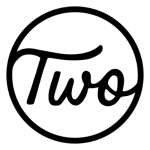Constant Growth for Free!
Free Professional Books and Digital Note Taking
Hoopla is a great way to access professional education titles for free. Professional books can run $20 to $35 each. If you are on a mission to grow, then that adds up! Often the public library has not been able to keep up with purchasing the professional titles in circulation. The library collection may be dated. Hoopla runs through your local library and provides you with current digital books. All you have to do is download the app, log in your library card information, and you can open your world to more books. Professional books are not the only content available, but for this blog I want to feature what you can use to grow.
Many times I am in conversation with educators or see books mentioned on Twitter, and I want to access the book. At first, I used to add them to my Amazon cart or wish list, and hope that one day I would be able to read it. However, now I have learned to see if a title is available on Hoopla. Some titles are available in an audio format or digital book. Hoopla has allowed me to develop my knowledge and grow for free!
In talking with others about Hoopla, I had some educator friends complain that Hoopla would not work for them. I asked why and it was shared, “I need to be able to take notes.” Yes, I remember feeling this same way. You want to mark the ideas that have you excited to try or use to improve your influence. If you cannot mark those inspirational spots, then you cannot grow, right? However, what I have learned is that you can screen shot digital text “thinking spots” and add them to a note in the Notes App. The collection of ideas is actually easier in that you have all of the key ideas all together. You do not have to flip through the book looking for the spot. You can also share your professional “thinking spots” with others if you are doing a school book club.
Do not get me wrong. Hoopla does not have everything! However, you can do a search and create a favorites list to go back to when you are ready to read or listen. Hoopla has expanded my professional learning and I hope it extends yours too! Please know, there are still plenty of titles that I purchase, but this has been a satisfying way to grow.

 Dr. Deb Lecklider, Director of EPPSP at Butler University,
Dr. Deb Lecklider, Director of EPPSP at Butler University,  Anila Dinn, Associate Vice President of Human Resources at Butler University
Anila Dinn, Associate Vice President of Human Resources at Butler University Tina Seymour, Educational Consultant,
Tina Seymour, Educational Consultant,  Lauren Franklin, Crispus Attucks High School Principal
Lauren Franklin, Crispus Attucks High School Principal